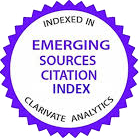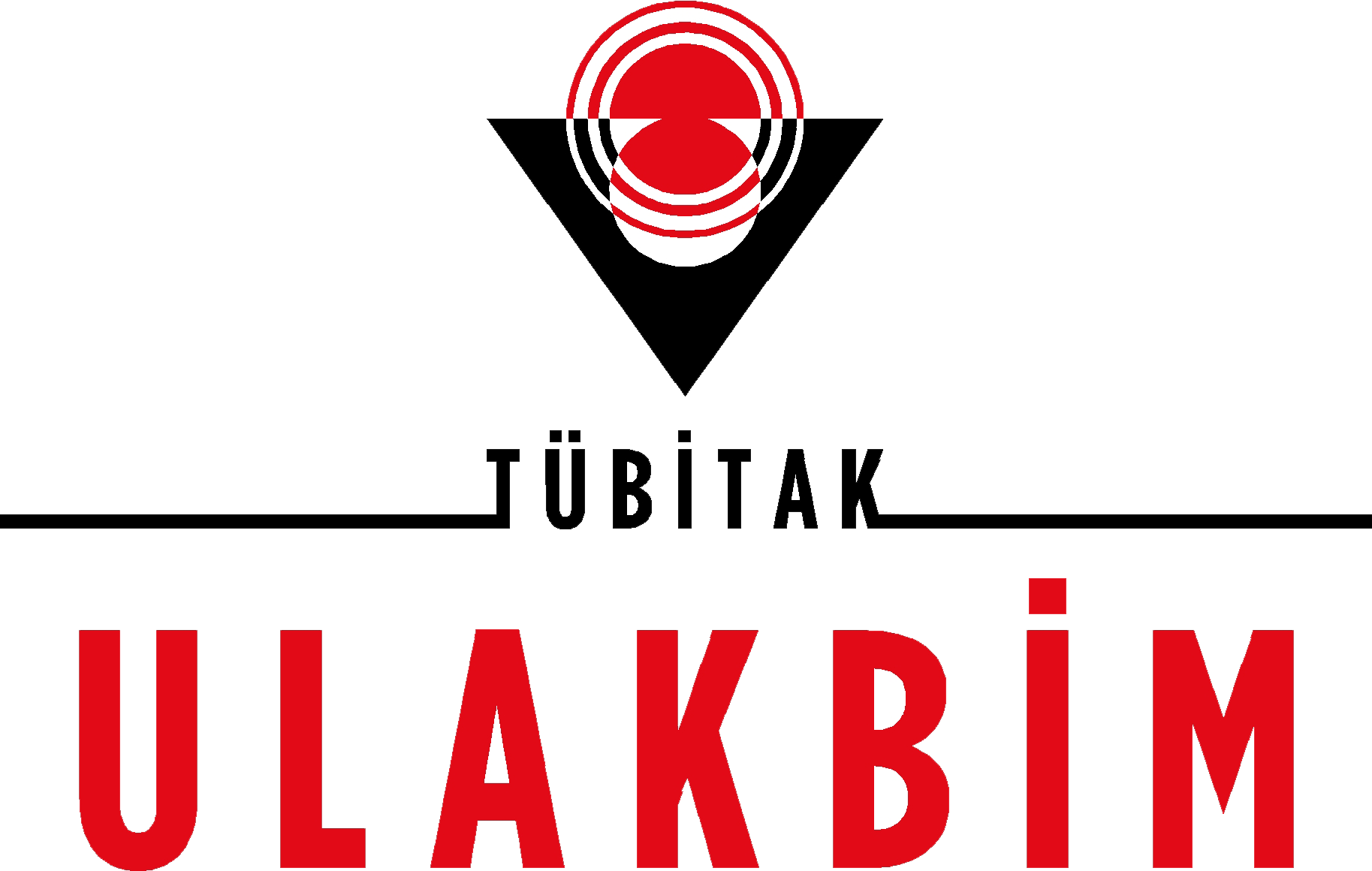Volume: 36 Issue: 4 - 2002
| EDITORIAL | |
| 1. | Türkderm'in yayın amacı ve gelişimi Oya GürbüzPage 243 Abstract | |
| REVIEW ARTICLE | |
| 2. | Skin lines and dermatology Mehmet Karakaş, Murat Durdu, Pınar Karakaş Pages 244 - 247 Dermatolojide bir çok akkiz ve konjenital hastalık hatta ilaç erüpsiyonlarının yerleşim yeri belirtilirken dermatom, Blaschko, Voight, Langer, pigmenter damarkasyon çizgileri gibi olduğu düşünülen veya saptanmış olan tanımlamalar kullanılmaktadır. Ancak hastalıklar tanımlanırken çeşitli güçlükler ile karşılaşılmakta özellikle de dermatomlar ve Blaschko çizgileri arasında karışıklıklar olmakatdır. Bu makalede kaynak kitaplar ve literatür bilgileri gözden geçirilerek deri çizgileri ve özellikle de Blaschko çizgilerinin oluşumu ve görüldüğü hastalıklar belirlemeye çalışıldı. The terms which includes dermatomes, Blaschko lines, Voight, Langer demercation lines are used while being described the localizations of several acquired and congenital diseases, drug eruptions in dermatology. But Blaschko lines may confuse with other patterns such as dermatomes and Langers lines. In this report, we review the knowledges of references and literature and we studied to determine the formation of Blaschko lines and associated with skin diseases. |
| ORIGINAL INVESTIGATION | |
| 3. | Morphologic and biochemical effects of doxycycline on collagen structure in experimental lathyrism Nilgün Şentürk, Gonca Çayır Keleş, Figen Kaymaz, Levent Yıldız, Gökhan Açıkgöz, Ahmet Yaşar Turanlı Pages 248 - 252 Latirizm kollajen sentezinde çapraz bağlantıda önemli bir enzim olan lizil oksidazın inhibisyonuna bağlı olarak ortaya çıkan defektif kollajen sentezi ile karakterize bir durumdur. Bir latirojen ajan olan beta-aminoproprionitril (b-APN) bağ dokusu metabolizmasının çalışılması için uygun bir ajandır. Tetrasiklinlerin kollajenaz gibi matriks metalloprtoteinazlarını inhibe ettiği bilinmektedir. Doksisiklin antimikrobial tetrasiklinlerden en etkili matriks metallaproteinazlarını inhibe ettiği bilinmektedir. Doksisiklin antimikrobial tetrasiklinlerden en etkili matriks metalloproteinaz inhibitörüdür. Bu çalışmada deneysel olarak oluşturulmuş latirizm modelinde, sistemik doksisiklin uygulamasının kollajen yapısı üzerine olan etkilerinin elektron mikroskopik ve biyokimyasal olarak incelenmesi amaçlanmıştır. Bu çalışmada ağırlıkları 250-300 gram olan 30 Wistar rat kullanıldı. Yirmi rat deney grubu (grup 2 ve grup 3) 10 rat ise kontrol grubu (grup 1) olarak değerlendirildi. Deney grubunda (grup 2,10 rat) günlük hazırlanan b-APN' in 40 gün subkutan olarak uygulanması ile latirizm oluşturuldu. Kırkıncı günde bu gruptan deri biyopsileri alındı. üçüncü gruba 40 gün b-APN uygulamasını takiben oral yoldan 15 gün süreyle 21 mg/gün dozda suda çözünmüş doksisiklin uygulandı. Ellibeşinci gün sonunda bu ratlardan alınan deri biyopsileri diğerleri ile birlikte morfolojik olarak incelendi. Serum IL-6 değerleri ELISA metodu ile çalışıldı. Doksisiklin uygulanan grupta (grup 3) morfolojik ve biyokimyasal olarak iyileşme olmadığını gözlemledik. Sonuç olarak; oral yoldan iki hafta süreyle uygulanan doksisiklin deneysel olarak oluşturulmuş latirizm modelinde kollajen yapısı üzerine morfolojik ve biyokimyasal olarak iyileştirici etki göstermemiştir. Background and Design: Lathyrism is characterized by defective collagen synthesis due to inhibition of lysyl oxidase, which is essential for interfibrillar cross-linking. Lathyritic agent b-aminoproprionitrile (β-APN) accepted as a suitable agent for the study of connective tissue metabolism. Tetracyclines are known to inhibit the matrix metalloproteinases such as collagenase and gelatinase. Doxycyclin is the most potent matrix metalloproteinase inhibitor among antimicrobial tetracyclines. Our purpose was to investigate the role of doxycycline on collagen structure in experimentally induced lathyrism by electron microscopically and biochemically. Materials and Methods: Thirty Wistar rats weighting between 250-300 gm were used in this study. Twenty rats were used as test (group 2 and 3) and 10 rats were used as control group (group 1). Experimental lathyrism was created with daily subcutaneous injection of lathyritic agent β-APN for 40 days in 20 rats (group 2 and 3). At day 40, skin biopsies were taken from 10 rats of the test group (group 2) to evaluate the effect of β-APN on dermal collagen. After 40 days, in the third group (10 rats) doxycycline 21 mg daily was administered orally for 15 days. In the first group (10 rats) no medication was performed after 40 days. At day 55, skin biopsies were taken from the first and third group. Serum IL-6 levels were measured by ELISA. Results: We did not observe remarkable improvement in the third group both electron microscopically and biochemically. Conclusion: Administration of doxycycline by oral route did not improve the structure of collagen both morphologically and biochemically, in experimentally induced lathyrism. |
| 4. | Investigation of carcinoembrynoic antigen in the skin and sera of patients with erythrodermic psoriasis Fatih Göktay, İkbal Esen Aydıngöz, Nilgün Caferler, Şirin Pekcan, Osman Güney Pages 254 - 260 Eritrodermik psoriasis, yaygın eritem ve deskuamasyonla karakterize ateş, lenfadenopati, genel durum bozukluğu gibi sistemik semptomların da eşlik ettiği şiddetli bir psoriasis formudur. Son yıllarda yapılan çalışmalarda, bir hücre yüzeyi glikoproteini olan karsinoembriyonik antijen2 in (KEA), psoriatik keratinositlerde hiperproliferasyon ve diferansiyasyon bozukluğu ile ilişkili olarak eksprese edildiği ileri sürülmektedir. Bu çalışmada 14 eritrodermik psoriasisli hastanın formalinde fikse edilmiş, parafinde bloklanmış deri biyopsilerinde, immünohistokimyasal yöntemle, poliklonal ve monoklonal antikorlar kullanarak epidermiste KEA ekspresyonu olup olmadığı araştırıldı. Psoriasisin farklı klinik formlarını gösteren 14 hastalık, 2. bir grup olguda da aynı yöntemle KEA varlığı retrospektif olarak araştırıldı. Bir kolon adenokarsinomunun ve psoriatik deride ekrin ekrin bezlerin sekretuar ve duktal bölümlerinin boyanması pozitif kontrol olarak değerlendirildi. Eritrodermik hastalardan 12' sinin ve diğer gruptan 1'i jeneralize püstüler psoriasis olmak üzere toplam 14 hastanın eş zamanlı serum KEA düzeyleri de ölçüldü. Kullanılan poliklonal antikorla eritrodermik psoriasisli hastaların hepsinde boyanma görülürken, monoklonal antikorla olguların hiçbirinde boyanma saptanmadı. Psoriasisin diğer klinik formlarına sahip 14 olgunun 13' ünde poliklonal antikorla epidermiste hafif ve orta şiddette boyanma görülürken, monoklonal antikorla olguların hiçbirinde boyanma görülmedi. Ölçülen serum KEA düzeylerinin hepsi normal sınırlar içindeydi. Sonuç olarak, immünohistokimyasal metodla yapılan bu çalışmada, kullanılan monoklonal antikorun tanıdığı KEA molekülü, gerek eritrodermik psoriasis, gerekse psoriasisin diğer klinik formlarının hiçbirinin epidermal keratinositlerinde tespit edilmedi. Ancak, daha önceki çalışmalarda psoriatik keratinositlerde bulunduğu ileri sürülen KEA, olgularımızın keratinositlerinde varsa bile kullandığımız monoklonal antikorun farklı olması nedeniyle gösterilememiş olabilir. Diğer yandan aynı monoklonal antikorla, ekrin bezlerde ve bir kolon adenokarsinomunda reaktive görülmesi, bu dokularda tespit edilen KEA ile psoriatik keratinositlerde varlığı tartışılan KEA arasında moleküler farklılıklar olabileceğini düşündürülmüştür. Background and Design: Erythrodermic psoriasis is a severe form of psoriasis which is characterized by generalized erythema, desquamation and accompanying systemic symptoms of fever, lymphadenopathy and general poor health. In recent studies, it has been reported that carcinoembryonic antigen (CEA), a cell surface glycoprotein, is expressed in the psoriatic keratinocytes regarding hyperproliferation and abnormal differantiation of these cells. Materials and Methods: In this study, CEA expression was investigated in the formalin fixed paraffin embedded skin biopsies of 14 patients with erythrodermic psoriasis by immunohistochemical staining of polyclonal and monoclonal antibodies. The presence of CEA expression was also investigated with the same method, in the skin biopsies of 14 psoriatic patients who have other clinical forms of the disease. A colonic adenocarcinoma and eccrine glands and ducts of the psoriatic skin specimens served as positive controls. Serum CEA levels were measured syncronously in a total of 14 patients consisting of 12 erythrodermic psoriasis, 1 generalized plaque and 1 generalized pustular type of psoriasis. Results: Positive staining with polyclonal antibody was obtained in all of the patients with erythrodermic psoriasis, while none of them showed positive staining with monoclonal antibody. Mild to moderate staining of the epidermis was seen with polyclonal antibody in 13 of 14 patients presenting with other clinical forms of psoriasis. None of the patients had positive staining with monoclonal antibody. All of the measured serum CEA levels were in normal range. Conclusion: In this study, the CEA molecule which is recognized by monoclonal antibody we used, was not found in the epidermal keratinocytes of the patients either with erythrodermic or other clinical forms of psoriasis. However, the presence of the CEA in the epidermal keratinocytes which has been suggested in the previous studies, even if any exists in our cases, couldnt have been showed because of the difference of the monoclonal antibody we used. On the other hand, determination of the positive reactivity with this monoclonal antibody in the eccrine glands and a colonic adenocarcinoma implied that there may be moleculer differences between the CEA found in this tissues and in the psoriatic keratinocytes. |
| 5. | The role of prolactin in psoriasis Özlem Yavuz, Ayşe Kavak, Ali Haydar Parlak, Hüseyin Anıl, İlker Aydoğan Pages 263 - 267 Prolaktinin (PRL) çok iyi bilinen çeşitli biyolojik etkilerinin yanında, hücresel ve humoral immünitenin önemli bir in vivo modülatörü olduğu, deri epitel hücre proliferasyonunu ve deri immün sistemini etkilediği bildirilmiştir. Bu çalışmada, etyolojisi hala anlaşılamamış, epidermal hiperplazi ve diskeratinizasyon ile karakterize, yaygın inflamatuar bir deri hastalığı olan psoriasis ille serum prolaktin düzeyleri arasında bir ilişki olup olmadığı araştırıldı. Klinik veya histopatolojik olarak psoriasis tanısı alan 34 olgu çalışma grubuna alındı. kontrol grubu 21 sağlıklı kişiden oluşturuldu. Serum prolaktin düzeyleri, "chemiluminescent" enzim immünolojik yöntemle, DPC ticari kitleri kullanılarak "Immulite One" hormon analizöründe ölçüldü. Psoriasisli hastalarda saptanan serum prolaktin düzeyleri (ortalama ± SD: 8,9 ± 5,4 ng/ml) kontrol grubu düzeyleri (ortalama ± SD: 9,13 ± 5,18 ng/ml) ile karşılaştırıldığında anlamlı bir fark saptanmadı (p=0,548). Son yıllarda, prolaktinin immün reaksiyonlarda önemli bir yeri olduğu ve keratinositlerde proliferatif bir etki gösterdiği anlaşılmıştır. Ancak bizim çalışmamızda, psoriasisli hastalarda serum prolaktin düzeylerinin yükselmediği saptandı. PRL' in epitel hücrelerin proliferasyonunda ve immünregülasyonda oynadığı rolü destekleyen güçlü veriler olduğu dikkate alındığında, bu konuda daha fazla çalışma yapılması gerektiği düşünüldü. Background: Despite its well known a variety of biological activities, it has been suggested that prolactin acts as an important in vivo modulator of cellular and humoral immunity and has some effects about skin epithelial cell proliferation and skin immune system. Objective: It was studied whether the relationship between psoriasis, which is a common inflammatory skin disease of still obscure etiology characterized by epidermal hyperplasia and dyskeratinization, and serum levels of prolactin. Materials and Methods: Serum levels of prolactin were estimated in 34 patients with psoriasis and the results were compared with those in 21 normal control subjects. Serum levels of prolactin were measured with chemiluminescent enzyme immunometric assay by using DPC commercial kits on Immulite One hormone analyser. Results: When serum prolactin levels in patients with psoriasis (mean ± SD: 8,9±5,4 ng/ml) were compared with those in normal control subjects (mean ± SD: 9,13±5,18 ng/ml), it was no significant difference between two groups (p= 0.548). Conclusion: In recent years, it has become apparent that prolactin plays an important part in the immune reactions and exerts a proliferative effect on human keratinocytes. But in our study, serum prolactin levels were not found significantly higher in patients with psoriasis. When it was took into consideration that there were powerful data supported the role of prolactin in epithelial proliferation and immunoregulation, it was thought that it should be performed further studies on this topic. |
| 6. | The incidence of melanocytic naevi and dysplastic naevi in the patients with atopic dermatitis Ulviye Atılganoğlu, Özlem Su, Nahide Onsun Pages 268 - 270 Atopik dermatit (AD) sıklıkla yaşamın ilk yılında başlayan kronik, rekürren inflamatuar bir hastalıktır. Hastalığın patogenezi hala tam olarak bilinmemektedir. Ancak genetik, çevresel, endojen, immunolojk ve farmakolojik faktörler AD gelişimine katkıda bulunmaktadır. Melanositik nevüs gelişiminde genetik faktörler, güneş ve UV ışığı, hormonlar ve immunsupresyon önemli bir rol oynamaktadır. Bu çalışmanın amacı bir grup AD' li hastada nevüs profilini araştırmaktı. Hanifin ve rajka kriterlerine göre AD tanısı alan 51 hasta çalışmaya alındı. kontrol grubunu oluşturan 50 olgu rastlantısal olarak dermatoloji ve pediatri polikliniklerinden seçildi. Tüm hastalar ve kontrol grubundaki olgular aynı doktor tarafından muayene edildi. hasta ve kontrol grubundaki olguların total vücut melanositik nevüs sayıları, displastik nevüs sayıları ve Fitzpatrik deri tipleri kaydedildi. Çalışma grubunun sonuçları kontrol grubuyla karşılaştırıldı. AD' li hastalarda kontrol grubuyla karşılaştırıldığında total vücut melanositik nevüs sayısı daha yüksekti. Ancak fark istatistiksel olarak anlamlı değildi. Atopik deride değişmiş immün yanıt ve inflamasyon, genetik faktörler ve uygulanan tedaviler melanositik nevüs gelişiminde rol oynayabilir. Özel immün durumlarından dolayı AD' li hastalar pigmente lezyonlar açısından düzenli olarak muayene edilmelidirler. Background and Design: Atopic dermatitis (AD) is a chronically, relapsing inflamatory skin disease which often starts in the first year of life. The pathogenesis of AD is still unknown but our knowledge of genetic, environmental, endogen, immunologic and pharmacologic factors contributes to the development of AD. Genetic factors, sunlight and UV light, hormones, and immunsupression display important roles in the development of melanocytic naevi. The purpose of this investigation was to point out the naevus profile in a group of patient with AD. Materials and Methods: Fifty-one patients with AD from our dermatology out-patient clinic included to the trial. AD was defined according to the criteria suggested by Hanifin and Rajka. The control group consisted of 50 subjects. These subjects were randomly selected from dermatology and pediactrics outpatient clinics of our hospital. All patients and controls were examined by the same doctor. The total body count of melanocytic naevi (MN), dysplastic naevi (DN) and skin type according to Fitzpatrick were noted. The results from study group compared with the control group. The patients with AD investigated for serum IgE and the relation between IgE and number of MN worked out. Results and Conclusion: The patients with AD had higher total body count of MN and DN compared with the control group, but diference in total body count of MN and DN between AD group and control group was not significant (p>0,05). There was also no correlation between total IgE and number MN in AD group. An altered immune response and inflammation in atopic skin, genetic factors and applied treatments may play role in the formation of MN. AD patients should be examined regulary for pigmented lesions because of their special immune status. |
| 7. | An evaluation of hepatitis B, C and HIV infections in sexually transmitted diseases Ayşe Kavak, Ali Haydar Parlak, Ramazan Yavuz Akman, Nuray Yeşildal, Hüseyin Anul, İlker Aydoğan, Bülent Çiçekçi, Demet Kaya Pages 272 - 275 Sifiliz başta olmak üzere cinsel yolla bulaşan hastalıklar (CYBH), bazen hepatit B,C ve HIV enfeksiyonlarına eşlik edebilir ya da geçişini kolaylaştırır. Bu çalışmada 50 CYBH' ı olan hastanın demografik özellikleri yanında, hepatit B,C ve HIV enfeksiyonu açısından taramaları yapıldı. CYBH' dan genital ülserle seyredenler ya da daha önce bu enfeksiyonlardan herhangi birini geçirmiş olmanın, hepatit B,C ve HIV enfeksiyonu açısından riski araştırıldı. Çalışmaya alınan 50 hastanın 26' sında (%52) kondiloma aküminata, 9' unda (%18) sifiliz, 5' inde (%10) nongonokoksk üretrit, 4' ünde (%8) molluskum kontagiosum, 3' ünde (%6) gonore, 3' ünde (%6) herpes genitalis vardı. Hastalarda anti HBc pozitifliği, kontrol grubuna göre anlamlı olarak daha yüksek bulundu, hepatit C ve HIV enfeksiyonu açısından anlamlılık saptanmadı. Elli hastanın genel değerlendirmesi yanında, genital ülserasyonla seyreden CYBH ve daha önce geçirilmiş CYBH' nın hepatit B riskini arttırmadığı ortaya çıktı. Sonuç olarak, cinsel temasta korunma ile sadece dermatolojik ya da ürolojik olarak sık karşılaşılan CYBH' dan değil, hepatit B gibi enfeksiyonların önlenmesinin mümkün olabileceği düşünüldü. Background and design: Sexually transmitted diseases (STD) especially manifesting genital ulceration symptoms can sometimes coexist with hepatitis B, C or HIV infections or facilitate their transmission. Materials and methods: In this study 50 STD patients, in addition to their demographic properties were screened for hepatitis B, C and HIV infections. The history of previous STD with genital ulcerations was studied as a risk factor for these infections. Results: Among 50 patients included in this study, condyloma accuminata in 26 (52 %), syphilis in 9 (18 %), non gonococcal urethritis in 5 (10 %), molluscum contagiosum in 4 (8%), gonorrhea in 3 (6 %) and herpes genitalis in 3 (6 %) patients were found. The rate of anti HBc seropositivity in the patients was found to be significantly higher as compared to control group. It was found that hepatitis B risk was not increased by STD with genital ulcerations or previous STD. Conclusion: As a result, prophylactic methods could prevent not only dermatologic or urologic STD but also hepatitis B infection as well. |
| TURKDERM-9860 | |
| 8. | Endogenous ochronosis: An alkoptonuria case Ayşe Ferzan Aytuğ, Oya Gürbüz, Tülin Ergun, Esin Kotiloğlu Pages 276 - 279 Alkaptonüri, nadir görülen otozomal resesif geçişli bir doğumsal metabolizma hastalığıdır. Tirozin ve fenilalanin katabolizmasınında rol alan "homogentisik asit oksidaz" enzimi eksikliği sonucu özellikle bağ dokusunda "homogentistik asit" (HGA)' in birikmesi ile karakterizedir. Burada nadir görülen, bebeklik ve çocukluk dönemi bulguları olmaksızın erişkin dönem bulguları ile kendini gösteren bir alkaptönüri olgusu sunulmaktadır. Alkaptonuria is a rare autosomal recessive disorder of inborn errors of metabolism. It is characterised by homogentisic acid (HGA) deposition especially in the connective tissue as a result of deficient homogentisic acid oxidase enzyme which has a role in the catabolism of tyrosine and phenylalanine. Here is presented, a rare alkaptonuria case, manifested with adulthood signs, in whom the infantile and childhood signs were not observed. |
| 9. | Leg ulcer due to protein C resistance: Report of a case Arzu Mete Kaynak, Oya Oğuz, Burhan Engin, Burhan Ferhanoğlu Pages 280 - 283 Bacak ülserleri büyük çoğunlukla tromboflebit veya trombotik sendromlar nedeniyle gelişen kronik venöz yetmezliğe bağlıdır. Derin venöz trombozun gelişimi için birçokrisk faktörü tanımlanmıştır. Son zamanlarda derin ven trombozuna en sık neden olan faktörlerden biri olarak aktive protein C rezistansı üzerinde durulmaktadır. Trombus oluşumunu önleyen bir faktör olan aktive protein C, faktör V Leiden mutasyonunda bu işlevini yerine getiremez. Bu yazıda faktör V Leiden mutasyonuna bağlı aktive protein C rezistansı saptanan 23 yaşında bir erkek olgu sunulmakta ve bacak ülserlerinin etyopatogenezinin araştırılmasında izlenmesi gereken yol vurgulanmaktadır. Venous leg ulcerations are mostly caused by chronic venous insuffeciency dealing with trauma, thrombophlebitis or thrombotic syndrome. Various risk factors have been identified for the development of deep venous thrombosis. Activated protein C resistance has recently emerged as one of the most frequent causes of venous thrombosis. Activated protein C cannot inactivate thrombosis formation in the factor V Leiden mutation. Here we present a 23-year-old male patient with factor V Leiden mutation and activated protein C resistance. The algorythmic approach to investigate the etiopathology of the leg ulcers is emphasized. |
| 10. | A case showing the futures of both reticulate acropigmentation of Kitamura and Dowling-Degos disease Ayşin Köktürk, Güliz İkizoğlu, Kıymet Baz, Tamer İrfan Kaya Pages 286 - 289 Kitamura' nın retiküler akropigmentasyonu (KRA), el ve ayakların dorsal yüzünde; Dowling-Degos Hastalığı (DDH) ise fleksural bölgelerde retiküler pigmente maküllerle karakterize nadir görülen genodermatozlar olarak tanımlanmıştır. Son yıllarda KRA ve DDH' nn, kompleks bir antitenin farklı klinik yansımaları olduğuyla ilgili görüşler ön plana çıkmıştır. Burada nadir görülen bu antitenin farklı fenotipleri olduğuna inanılan KRA ve DDH özelliklerini birarada gösteren yaygın retiküler-punktat pigmentasyonu olan bir olgu sunulmaktadır. Reticulated acropigmentation of Kitamura (RAPK) and Dowling-Degos Disease (DDD) are rare genodermatoses characterized by reticulated pigmented macules located especially on the dorsa of the hands and feet in RAPK and on the flexures in DDD. In recent years, it is postulated that these two genodermatoses are two different clinical projections of a complex entity. We report a case showing the futures of both RAPK and DDD, supporting the hypothesis that they are different phenotypes of one single entity. |
| 11. | Purpura fulminans: case report Selma Sönmez Ergün, Ulviye Atılganoğlu, Işıl Kurşun Pages 292 - 294 Purpura fulminans hızlı seyir gösteren, vasküler kollapsa, dissemine intravasküler koagülasyona (DIC) ve ciddi cilt kayıplarına ve hatta ekstremite ampütasyonlarına neden olabilen bir hastalıktır. Bu çalışmada, purpura fulminans nedeniyle her iki kol, sağ kalça, sağ ve sol uyluk-bacak bölgesinde tam katlı nekrozlar oluşan ve debriman ve greftleme ile tedavi edilen 57 yaşındaki bayan hasta sunulmaktadır. Background: Purpura fulminans is a devastating disorder characterized by rapidly progressing hemorrhagic necrosis of the skin, vascular collapse, and disseminated intravascular coagulation. Most often, the disorder results in severe skin loss, but it can also result in the need for extremity amputations. Observation: The case of a 57 year old female requiring debridmans and grafting of right gluteal and right-left thighs and crura due to purpura fulminans is presented. |
| 12. | An early stage of acroangiodermatitisz of Mali type Necmettin Kırtak, H. Serhat İnalöz, Orhan Özgöztaşı, Metin Karakök, Savaş Öztürk Pages 295 - 297 Mali tipi akroanjiodermatit (AAD) alt ekstremitelerde morumsu, kahverengi veya siyah papül veya plakların bazen bant şeklinde veya rastgele şekiller oluşturdukları nadir görülen bir deri hastalığıdır. Mali tipi AAD genellikle alt ekstremitelerin konjenital vasküler malformasyonları veya akkiz dolaşım bozukları sonucu artmış venöz basıncın bir sekeli olarak gelişir. Bu çalışmada 14 yaşında üç aydır sağ ayak dorsalinde yavaşça genişleyen deri döküntüleri üzerine polikliniğimize başvuran bir bayan hasta sunulmuştur. Dermatolojik muayenesinde değişik şekillerde morumsu-siyah maküllerin bant şeklini oluşturduğu görüldü. Lezyon keskin sınırlıydı ve diaskopi ile solma gözlenmedi. Lezyondan yapılan deri biopsisinin histopatolojik muayenesinde hiperkeratoz, değişken akantoz, üst dermisde perivasküler lenfohistiyositik infiltrasyonla birlikte dilate damarlar ve fibrozis görüldü. Acroangiodermatitis (AAD) of Mali is an unusual cutaneous eruption consisting of violaceous, brown or dusky macules, papules, or plaques that may develop sometimes in band-like or bizarre configurations on the lower extremities. AAD of Mali usually develops as a sequel of increased venous pressure due to congenital vascular malformations or acquired circulatory abnormalities of the lower extremities. A 14-year-old girl presented with a three month history of an unusual cutaneous eruption that was slowly enlarging on the dorsal aspect of her right foot. Dermatological examination revealed band-like violaceus macule in bizarre configurations. The lesion was sharply circumscribed and there was no evidence of blanching after diascopy. Histopathological examination of the lesional skin biopsy revealed hyperkeratosis, alternating acanthosis, dilated vessels with perivascular lymphohistiocytic infiltrate and fibrosis in the upper dermis. |
| CONTINUING MEDICAL EDUCATION | |
| 13. | Postherpetic neuralgia and treatment Deniz Türker Akyol, Serap Utaş Pages 298 - 302 Postherpetik nevralji, sıklıkla tedavilere dirençli, fiziksel ve sosyal sakatlıklara, psikolojik bozukluklara yol açabilen ve yıllarca sürebilen kronik bir ağrı sendromudur. Birçok farklı tedavi yöntemi denenmesine rağmen son yıllara kadar sadece bunlardan birkaçının etkili olduğu gösterilmiştir. Bu derlemede postherpetik nevralji tedavisindeki son gelişmeler ele alınmıştır. Postherpetic neuralgia, is a chronic pain syndrome that is often refractory to treatment and can persist for years. This can result in physical, occupational and social disability, psychological distress. A wide range of treatment measures have been tried but until recently, very few of these had been shown unequivocally to be effective. In this review we provide an update on recent developments in the treatment of postherpetic neuralgia. |
| HABERLER | |
| 14. | Haberler Page 303 Abstract | |
| İZLENİM | |
| 15. | 11. Eadv Kongresi'nin Ardından Esen Özkaya BayazıtPage 304 Abstract | |
| 16. | 7. Avrupa Pediatrik Dermatoloji Kongresi'nin Ardından Ümit Ukşal, Osman KösePage 305 Abstract | |
| NEW PUBLICATIONS | |
| 17. | Fasiyal Rejuvenasyon Page 306 Abstract | |






















